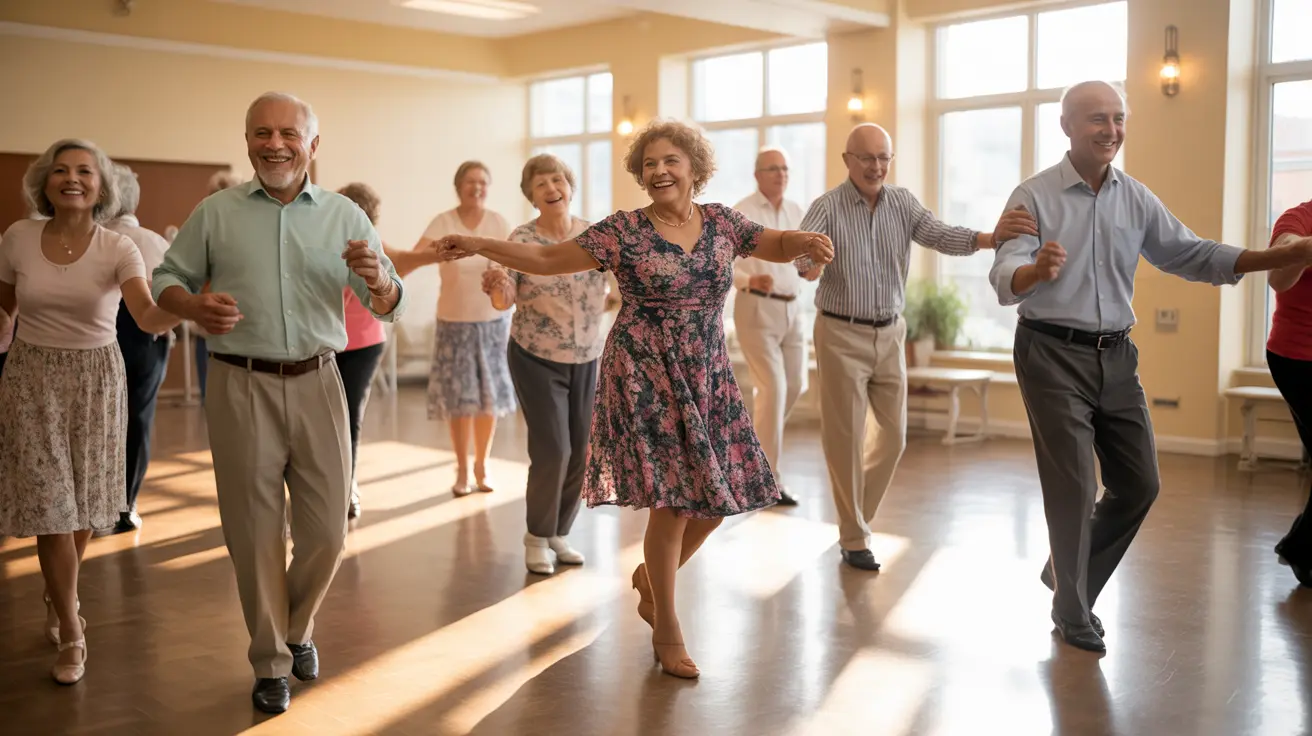Dancing isn't just a joyful activity—it's a powerful tool for enhancing the physical, mental, and social well-being of senior citizens. As more older adults seek engaging ways to stay active, dance has emerged as an excellent option that combines exercise, social interaction, and cognitive stimulation in one enjoyable package.
Whether you're considering taking up dancing or looking to encourage a loved one to get moving, understanding the comprehensive benefits and safe approaches to dance can help make this activity an enriching part of senior life.
Physical Health Benefits of Dance for Seniors
Regular dance participation offers numerous physical advantages that are particularly valuable for older adults:
- Improved cardiovascular health and endurance
- Enhanced muscle strength and tone
- Better joint mobility and flexibility
- Increased bone density
- Weight management support
- Improved posture and coordination
Unlike some forms of exercise, dance provides a full-body workout that can be modified to match individual capabilities and fitness levels. The rhythmic movements help maintain muscle mass while putting less stress on joints compared to high-impact activities.
Brain Health and Cognitive Benefits
Dancing engages multiple brain functions simultaneously, making it an excellent activity for maintaining cognitive health:
- Learning and memorizing dance steps
- Coordinating movements with music
- Spatial awareness and navigation
- Quick decision-making during partner dances
- Social interaction and communication
Research suggests that dancing may be particularly effective in reducing the risk of dementia, as it combines physical exercise with mental challenges and social engagement—three key factors in maintaining brain health.
Balance and Fall Prevention
One of the most significant benefits of dancing for seniors is its positive impact on balance and stability:
- Strengthens core muscles
- Improves proprioception (body awareness)
- Enhances reaction time
- Develops better weight distribution
- Increases confidence in movement
These improvements can significantly reduce the risk of falls, a major concern for older adults, while building the physical confidence needed for daily activities.
Social and Emotional Advantages
The social aspects of dancing provide powerful emotional benefits for senior citizens:
- Regular social interaction and community building
- Reduced feelings of isolation and loneliness
- Improved mood and decreased depression risk
- Enhanced self-expression and creativity
- Increased self-confidence
- Opportunities for new friendships
Getting Started with Dancing
Choosing the Right Dance Style
Several dance styles are particularly suitable for seniors:
- Ballroom dancing (waltz, foxtrot)
- Line dancing
- Gentle swing dancing
- Chair dancing for limited mobility
- Social dancing
- Modified ballet or jazz
Safety Considerations
Before beginning a dance program, seniors should:
- Consult with healthcare providers
- Start with beginner-level classes
- Choose classes specifically designed for older adults
- Wear appropriate, supportive footwear
- Stay hydrated and pace activities
- Listen to their body and take breaks as needed
Frequently Asked Questions
What are the physical health benefits of dancing for senior citizens?
Dancing provides comprehensive physical benefits including improved cardiovascular health, enhanced muscle strength, better flexibility, increased bone density, and improved balance. It's a low-impact activity that can be adapted to different fitness levels while providing full-body exercise.
How does dancing help reduce the risk of dementia and improve brain health in older adults?
Dancing combines physical movement with mental challenges like memorizing steps and spatial awareness. This multi-tasking activity stimulates multiple brain areas simultaneously, potentially reducing dementia risk while maintaining cognitive function and memory.
Can dancing lower the risk of falls and improve balance for seniors?
Yes, dancing significantly improves balance and stability by strengthening core muscles, enhancing proprioception, and improving coordination. These benefits directly contribute to better balance and reduced fall risk in older adults.
What social and emotional benefits does dancing provide to older adults?
Dancing offers numerous social and emotional benefits, including reduced isolation, improved mood, decreased depression risk, enhanced self-expression, and opportunities for social connection through group activities and partner dances.
How can seniors get started safely with a dance program, and are there dance styles suitable for different fitness levels?
Seniors should begin by consulting their healthcare provider, then choose age-appropriate classes taught by qualified instructors. Various dance styles, from chair dancing to ballroom, can be adapted to different fitness levels. Starting with beginner classes and gradually increasing intensity ensures safe progression.




